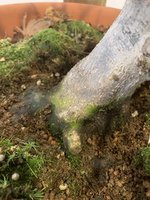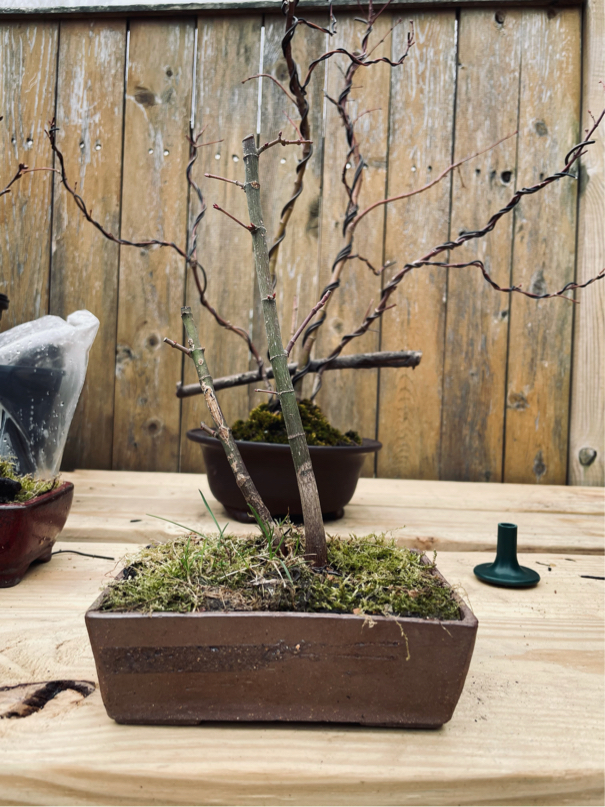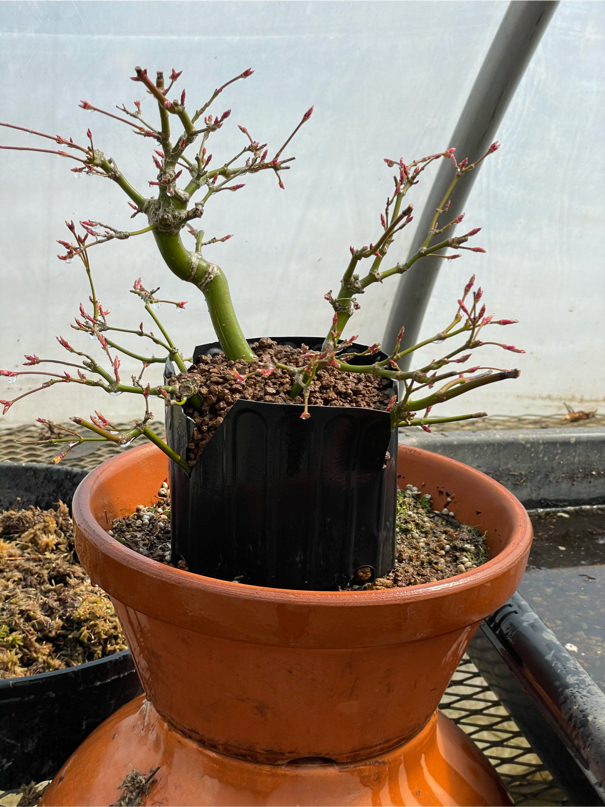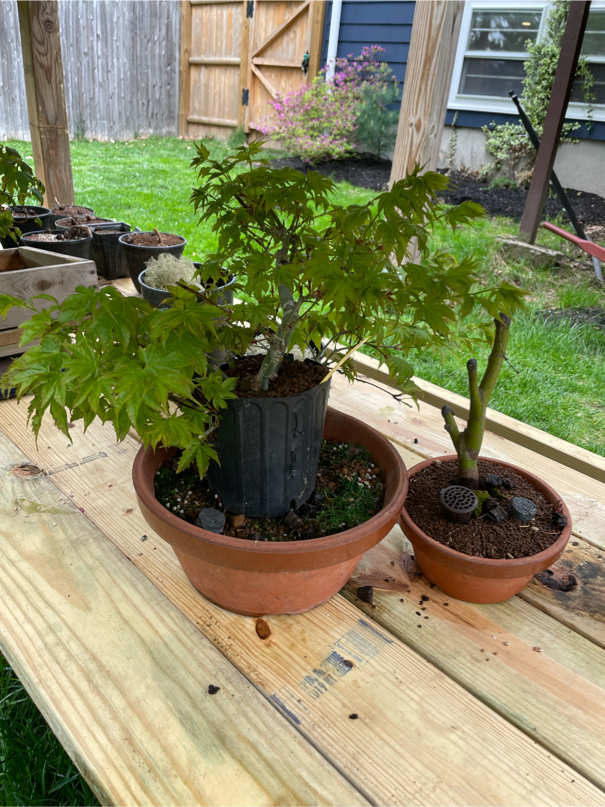badatusernames
Omono
OK, so got the larches thread on its way, now one for maples. I picked this up recently to work on in spring, if only to repot.
What I'm currently seeing here is where the tree was chopped and a new apex was made - the chop that was made seems high to me, and the section too straight. Do you agree? My initial thought was to cut this back and try to make a more compressed tree, rather than what this was building towards which I see as a much larger tree than what's in my head. I can see this tree if I were to keep it, but it's just staring at me now with no leaves on the tree, and it doesn't seem ideal. It looks like there's only one ring near the top where I would anticipate new shoots reliably, so I THINK that means that if I want to mess with this I'm basically going to have to take the whole thing off and use the branch at the bottom of the current apex as a new leader.
The arrow is pointing to what I'm thinking is a sacrifice branch that I don't know if I want.

Now, based on the current branching, that seems like the front, you can kind of make a triangle whose peak is leaning off to the right with the shape of the branches as they are now, but I don't think it takes into account the nebari, which I'm going to need to dig out to see this better, but there's something interesting going on, and that front really loses it. That flat piece on the left is pointing straight at the camera in the wide shot.

Finally, there's these two branches coming out lower on the tree. I don't know that I want them both there, it seems like one was either grown to replace the thicker one, or it was being used as a sacrifice. Might be good to keep for now to keep thickening the trunk, but of course there's the concern of scarring with it getting too big (which maybe it already is, I don't know). This section is on the lower right of the trunk in the wide shot.

Anyways, thoughts welcome and I'll be following up in this thread as I progress. I suppose I could go nuts and chop it above the first branch and try for a shohin, but I feel like with the material as it stands now I should try to utilize what I have rather than discarding it and regrowing from scratch.
I also have a clump going but figured I'd start here.
What I'm currently seeing here is where the tree was chopped and a new apex was made - the chop that was made seems high to me, and the section too straight. Do you agree? My initial thought was to cut this back and try to make a more compressed tree, rather than what this was building towards which I see as a much larger tree than what's in my head. I can see this tree if I were to keep it, but it's just staring at me now with no leaves on the tree, and it doesn't seem ideal. It looks like there's only one ring near the top where I would anticipate new shoots reliably, so I THINK that means that if I want to mess with this I'm basically going to have to take the whole thing off and use the branch at the bottom of the current apex as a new leader.
The arrow is pointing to what I'm thinking is a sacrifice branch that I don't know if I want.

Now, based on the current branching, that seems like the front, you can kind of make a triangle whose peak is leaning off to the right with the shape of the branches as they are now, but I don't think it takes into account the nebari, which I'm going to need to dig out to see this better, but there's something interesting going on, and that front really loses it. That flat piece on the left is pointing straight at the camera in the wide shot.

Finally, there's these two branches coming out lower on the tree. I don't know that I want them both there, it seems like one was either grown to replace the thicker one, or it was being used as a sacrifice. Might be good to keep for now to keep thickening the trunk, but of course there's the concern of scarring with it getting too big (which maybe it already is, I don't know). This section is on the lower right of the trunk in the wide shot.

Anyways, thoughts welcome and I'll be following up in this thread as I progress. I suppose I could go nuts and chop it above the first branch and try for a shohin, but I feel like with the material as it stands now I should try to utilize what I have rather than discarding it and regrowing from scratch.
I also have a clump going but figured I'd start here.
Last edited:







